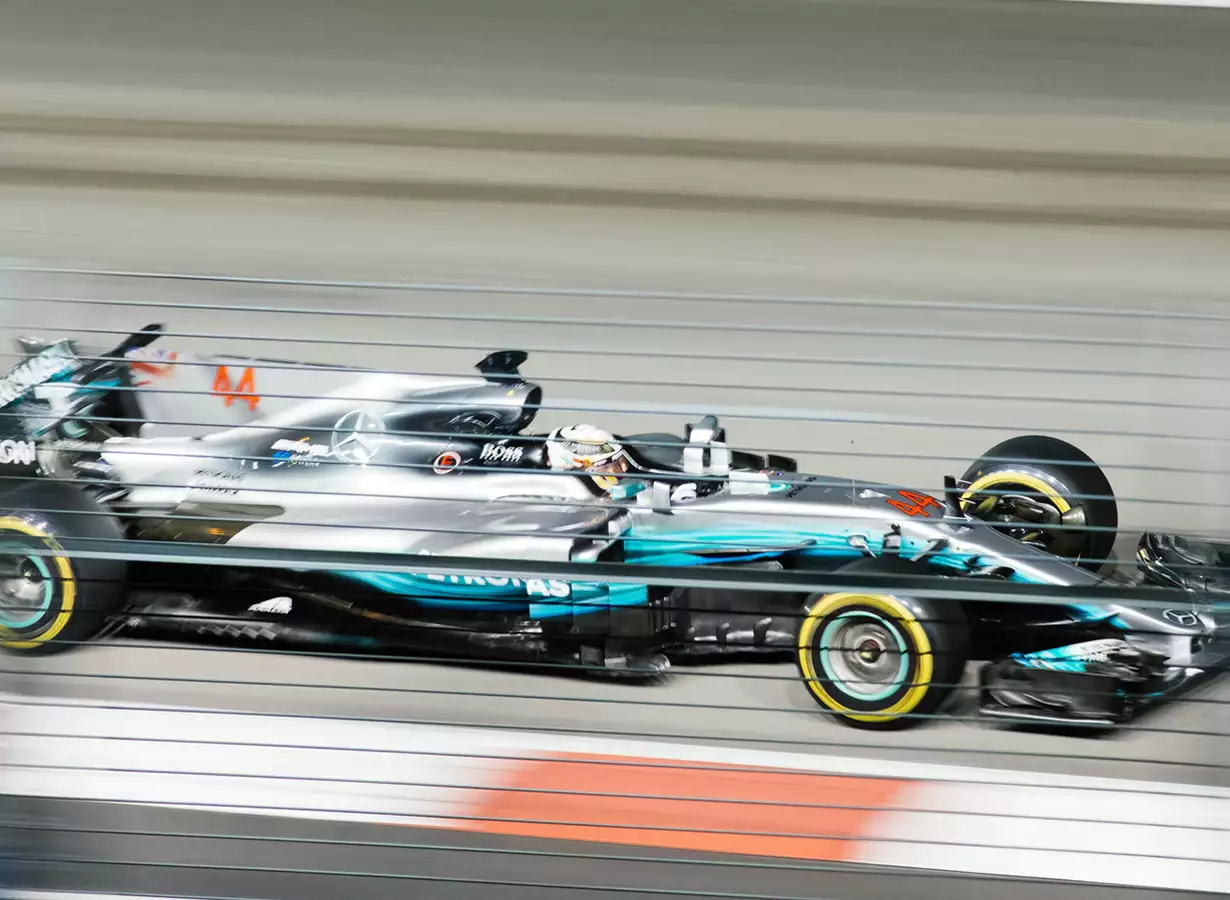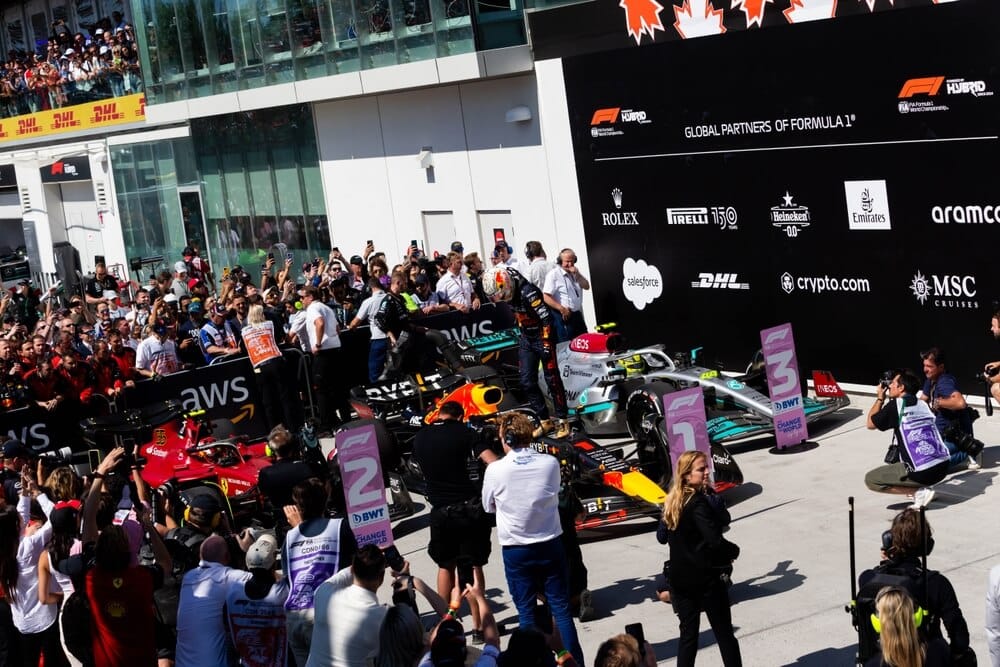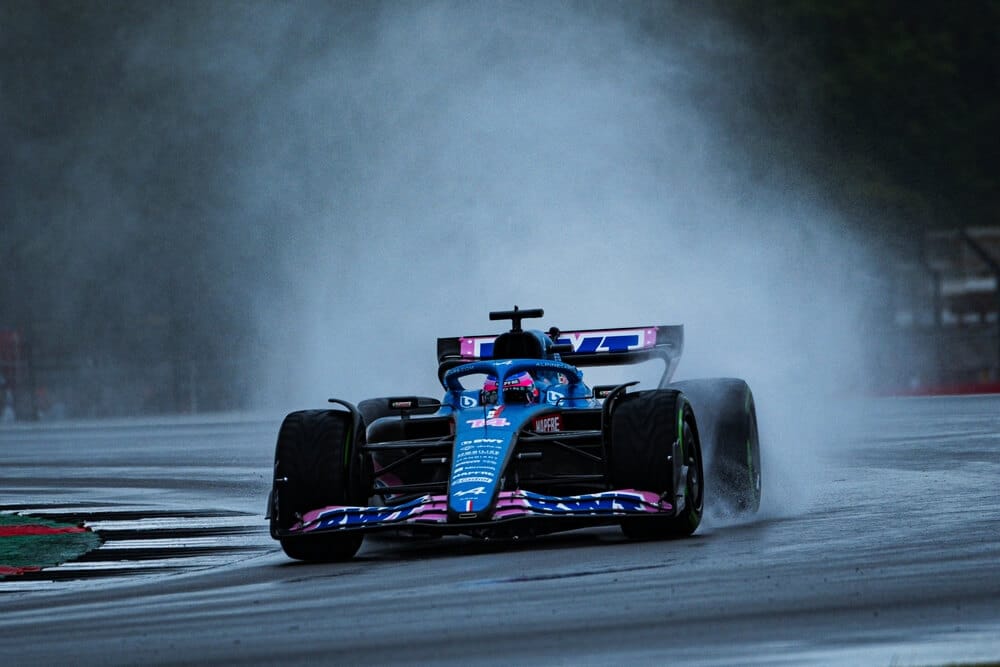In the last decades aerodynamics has played a significant role in the major changes in the configuration and performance of Formula 1 racing cars.
In fact, aerodynamics has had such an impact on cornering and braking accelerations, and thus cornering speeds, that changes are now required to limit performance in the name of safety.
But, aerodynamics in an F1 car is a complicated topic, so let’s dive deeper into the defining science in modern F1 design. We promise to explain it simply.
Table of Contents
Watch this videon from Chain Bear to understand aerodynamics in Formula One.
What is aerodynamics in F1?
Aerodynamics is the study of the motion of air. More precisely, when it comes to F1, we’re talking about how the air interacts with the car as it drives through it.
The goal for teams is to build a car that is fast in both corners and straights, and Formula 1 teams shape their cars to take advantage of some useful properties of aerodynamics.
Every surface of the car, including the driver’s helmet, has an impact on aerodynamic performance.
While the study of aerodynamics and its subsequent application in F1 is left to professionals with PhDs, and some of the more complicated details are way out of our league, the underlying concepts are actually surprisingly simple to grasp.
In the most nutshells of nutshells, F1 designers aim to maximize downforce while minimizing drag, and aero is the key.
Key takeaways
Here are key takeaways from aerodynamics on a F1 car:
- Aerodynamics is the study of the motion of air
- In Formula One this means how the air interacts with the car as it drives through it
- The car and the shape of the driver have an effect on aerodynamics
Understanding aerodynamics
Below, we go through the aerodynamics of a Formula 1 car. We will go in depth to really understand how it all works and why it is so important.
Downforce
Downforce is a downward lift force produced by the aerodynamic features of a vehicle, in our case, a Formula 1 car.
The same principle that allows an airplane to rise off the ground by creating lift from its wings is used in the opposite way to apply force that presses the race car against the track surface, giving it more grip.
This effect is known as ‘aerodynamic grip,’ and it differs from ‘mechanical grip,’ which instead is determined by the car’s mass, tires, and suspension.
Aerodynamic devices can only create downforce at the expense of increased aerodynamic drag, and the best setup is almost always a compromise between the two. Drag is simply the aerodynamic resistance, or friction, that the car encounters as it travels through the air.
When traveling at racing speeds, two primary components of a racing car can be used to create downforce: the shape of the body and the use of wings.
An F1 car's overall shape, like its wings, is reminiscent of an upside down airplane wing.
Downforce generated by cars body
The rounded and tapered shape of the car’s body is intended to slice through the air and reduce air resistance. Then, detailed bodywork is added to allow air to flow smoothly to the downforce-creating elements.
An F1 car’s overall shape, like its wings, is reminiscent of an upside down airplane wing. Looking at a profile of a Formula 1 car, the front has the least ground clearance, followed by the section between the front and rear tires, and finally the rear has the most clearance.
This was much more apparent prior to 2022, with cars built in what was known as a high-rake concept, which was most notably used by Red Bull, which saw the car run with the rear jacked up in the air while the front ran close to the ground.
F1 managing director Ross Brawn was instrumental in shaping the new regulations for 2022, and one area on which he focused was removing the high-rake design, which he thought looked ridiculous.
Downforce generated by airfoils
The use of airfoils, also known colloquially as wings, is the second way designers can generate downforce.
As previously stated, a Formula 1 wing is essentially an upside-down airplane wing. It generates downforce by creating a zone of lower pressure air beneath the wing.
The magnitude of downforce created by a car’s wings is primarily determined by three factors:
- The shape of the wing, including surface area and cross-section,
- The wing’s angle of attack, and
- The car’s speed.
A larger surface area generates more downforce and drag. A greater angle of attack of the wing or spoiler also produces more downforce. The faster the car goes, the faster the air moves relative to the car, increasing both drag and downforce.
Wings also contribute to a problem known as ‘dirty air.’ This is because as the air passes over the car’s wings, it becomes more turbulent, causing any cars behind to lose downforce.
This has long been a source of contention, so much so that a major regulatory change was required in 2022 to reduce ‘dirty air.’ But we’ll get to that later.
One thing we must consider is that wings serve different functions depending on where they are located on the car. For the sake of concision, let’s focus on the front and rear of the car.
It is important with balance
The wings at the front of the car serve two purposes. They generate downforce, which improves the grip of the front tires while also optimizing air flow to the rest of the car.
The new aerodynamic regulations in effect since 2022 have greatly simplified the front-wing design, which was previously a complex jumble of winglets.
At the back, the story is a bit different. The flow of air at the rear of the car is influenced by the front wings, front wheels, mirrors, driver’s helmet, side pods, and exhaust, among other things.
This makes the rear wing less aerodynamically efficient than the front wing. However, because it must generate more than twice as much downforce as the front wings to keep the car balanced, the rear wing is much larger.
Phew… now that the boring stuff is out of the way, let’s look at what’s been making headlines in recent months.
Ground effect
Ground-effect made its F1 debut in the 1970s, with Colin Chapman’s Lotus team being the first to discover it.
The Lotus 78 was the first Formula 1 car to use a ground-effect design. Its underbody was designed in such a way that it produces a Venturi effect with the ground.
The Venturi effect is crucial
Simply put, it describes the decrease in pressure caused by a fluid flowing through a constricted section. In Formula 1, that fluid is air, the constriction is the venturi tunnel, and the drop in pressure beneath the car is huge amounts of downforce.
But the party couldn’t last forever. Because of the new ground-effect cars’ ever-increasing cornering speeds, the FIA decided to ban the use of the concept for safety reasons.
Another risk was that if the ground-effect was ever disrupted, cars would lose a lot of downforce very quickly, a huge risk considering that F1 cars at the time were more metal coffins than anything.
As a result, the use of the ground-effect was prohibited since 1983, and it took nearly four decades for it to make a return. But, alas, it has arrived.
Aerodynamics regulations in Formula 1
One focus of the new aerodynamic regulations aimed at improving racing has been reducing the amount of ‘dirty air’ a car throws up in its wake.
One major way this was accomplished was by simplifying virtually every aerodynamic device on the car, with the most drastic changes made to the side pods with the removal of the bargeboards.
But then there’s another issue: it’s Formula 1, and the cars have to be fast, and we’ve just removed a lot of downforce, so how do we restore some downforce without creating dirty air again?
The solution was to use venturi tunnels, which are cutouts beneath the car that cause the much-needed constriction of the air we talked about.
Venturi tunnels are now the primary means by which an F1 car generates downforce, and the designers’ job is largely to optimize their effectiveness. This leads us to the next topic of discussion.
How do teams design aerodynamics on their cars?
The process by which teams design new cars or aerodynamic parts has evolved dramatically over time.
Some of this change is due to engineers’ improved understanding of the science, and some is due to new tools such as advanced computer graphics and simulation.
Advanced CFD, or computational fluid dynamics, programs are now used by teams to simulate the airflow around the cars and optimize their performance.
That is not all, however. While simulations are an extremely useful tool, there is always a problem with the correlation between what happens in the program and what happens in reality.
For example: the 2022 Mercedes car, while great on paper, did not live up to the CFD results once it hit the track.
As a result, teams use other tools to bridge the gap. The wind tunnel is one such tool, and it does exactly what its name implies. It is made up of a closed tubular passage with a powerful fan in the middle, with the car (usually a smaller model than the real thing) mounted in the middle.
Sensors that collect data
Sensors on the car then record data, and that data is used to judge the performance of the car’s aerodynamics in a more realistic setting.
Of course, the wind tunnel isn’t a perfect representation of what happens on the circuit, and engineers won’t truly know how the aero will behave until the car is making laps around a real racetrack.




